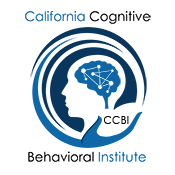How to Trick Your Brain for Happiness
By Rick Hanson
 gobyg
gobygIt’s true. The amount of knowledge we have about the brain has doubled in the last 20 years. Yet there’s still a lot we don’t know.
In recent years, though, we have started to better understand the neural bases of states like happiness, gratitude, resilience, love, compassion, and so forth. And better understanding them means we can skillfully stimulate the neural substrates of those states—which, in turn, means we can strengthen them. Because as the famous saying by the Canadian scientist Donald Hebb goes, “Neurons that fire together, wire together.”
Ultimately, what this can mean is that with proper practice, we can increasingly trick our neural machinery to cultivate positive states of mind.
But in order to understand how, you need to understand three important facts about the brain.
Fact one: As the brain changes, the mind changes, for better or worse.
For example, more activation in the left prefrontal cortex is associated with more positive emotions. So as there is greater activation in the left, front portion of your brain relative to the right, there is also greater well-being. That’s probably in large part because the left prefrontal cortex is a major part of the brain for controlling negative emotion. So if you put the breaks on the negative, you get more of the positive.
On the other hand, people who routinely experience chronic stress—particularly acute, even traumatic stress—release the hormone cortisol, which literally eats away, almost like an acid bath, at the hippocampus, which is a part of the brain that’s very engaged in visual-spatial memory as well as memory for context and setting.
For example, adults who have had that history of stress and have lost up to 25 percent of the volume of this critically important part of the brain are less able to form new memories.
So we can see that as the brain changes, the mind changes. And that takes us to the second fact, which is where things really start getting interesting.
Fact two: As the mind changes, the brain changes.
These changes happen in temporary and in lasting ways. In terms of temporary changes, the flow of different neurochemicals in the brain will vary at different times. For instance, when people consciously practice gratitude, they are likely getting higher flows of reward-related neurotransmitters, like dopamine. Research suggests that when people practice gratitude, they experience a general alerting and brightening of the mind, and that’s probably correlated with more of the neurotransmitter norepinephrine.
Here’s another example of how changes in mental activity can produce changes in neural activity: When college students deeply in love are shown a picture of their sweetheart, their brains become more active in the caudate nucleus, a reward center of the brain. As the mind changes—that rush of love, that deep feeling of happiness and reward—correlates with activation of a particular part of the brain. When they stop looking at that picture of their sweetheart, the reward center goes back to sleep.
Now the mind also can change the brain in lasting ways. In other words, what flows through the mind sculpts the brain. I define the mind as the flow of immaterial information through the nervous system—all the signals being sent, most of which are happening forever outside of consciousness. As the mind flows through the brain, as neurons fire together in particularly patterned ways based on the information they are representing, those patterns of neural activity change neural structure.
So busy regions of the brain start stitching new connections with each other. Existing synapses—the connections between neurons that are very busy—get stronger, they get more sensitive, they start building out more receptors. New synapses form as well.
One of my favorite studies of this involved taxi cab drivers in London. To get a taxi license there, you’ve got to memorize the spaghetti-like streets of London. Well, at the end of the drivers’ training, the hippocampus of their brain—a part very involved in visual-spatial memory—is measurably thicker. In other words, neurons that fire together wire together, even to the point of being observably thicker.
This has also been found among meditators: People who maintain some kind of regular meditative practice actually have measurably thicker brains in certain key regions. One of those regions is the insula, which is involved in what’s called “interoception”—tuning into the state of your body, as well as your deep feelings. This should be no surprise: A lot of what they’re doing is practicing mindfulness of breathing, staying really present with what’s going on inside themselves; no wonder they’re using, and therefore building, the insula.
Another region is the frontal regions of the prefrontal cortex—areas involved in controlling attention. Again, this should be no surprise: They’re focusing their attention in their meditation, so they’re getting more control over it, and they’re strengthening its neural basis.
What’s more, research has also shown that it’s possible to slow the loss of our brain cells. Normally, we lose about 10,000 brain cells a day. That may sound horrible, but we were born with 1.1 trillion. We also have several thousand born each day, mainly in the hippocampus, in what’s called neurogenesis. So losing 10,000 a day isn’t that big a deal, but the net bottom line is that a typical 80 year old will have lost about 4 percent of his or her brain mass—it’s called “cortical thinning with aging.” It’s a normal process.

But in one study, researchers compared meditators and non-meditators. In the graph to the left, the meditators are the blue circles and the non-meditators are the red squares, comparing people of the same age. The non-meditators experienced normal cortical thinning in those two brain regions I mentioned above, along with a third, the somatosensory cortex.
However, the people who routinely meditated and “worked” their brain did not experience cortical thinning in those regions.
That has a big implication for an aging population: Use it or lose it, which applies to the brain as well as to other aspects of life.
That highlights an important point that I think is a major takeaway in this territory: Experience really matters. It doesn’t matter only in our moment-to-moment well-being—how it feels to be me—but it really matters in the lasting residues that it leaves behind, woven into our very being.
Which takes us to the third fact, which is the one with the most practical import.
Fact three: You can use the mind to change the brain to change the mind for the better.
This is known as “self-directed neuroplasticity.” Neuroplasticity refers to the malleable nature of the brain, and it’s constant, ongoing. Self-directed neuroplasticity means doing it with clarity and skillfulness and intention.
The key to it is a controlled use of attention. Attention is like a spotlight, to be sure, shining on things within our awareness. But it’s also like vacuum cleaner, sucking whatever it rests upon into the brain, for better or worse.
For example, if we rest our attention routinely on what we resent or regret—our hassles, our lousy roommate, what Jean-Paul Sartre called “hell” (other people)—then we’re going to build out the neural substrates of those thoughts and feelings.
On the other hand, if we rest our attention on the things for which we’re grateful, the blessings in our life—the wholesome qualities in ourselves and the world around us; the things we get done, most of which are fairly small yet they’re accomplishments nonetheless—then we build up very different neural substrates.
I think that’s why, more than 100 years ago, before there were things like MRIs, William James. the father of psychology in America, said. “The education of attention would be an education par excellence.”
The problem, of course, is that most people don’t have very good control over their attention. Part of this is due to human nature, shaped by evolution: Our forbearers who just focused on the reflection of sunlight in the water—they got chomped by predators. But those who were constantly vigilant—they lived.
And today we are constantly bombarded with stimuli that the brain has not evolved to handle. So gaining more control over attention one way or another is really crucial, whether it’s through the practice of mindfulness, for instance, or through gratitude practices, where we count our blessings. Those are great ways to gain control over your attention because there you are, for 30 seconds or 30 minutes, coming back to focus on an object of awareness.
Taking in the good
This brings me to one of my favorite methods for deliberately using the mind to change the brain over time for the better: taking in the good.
Just having positive experiences is not enough to promote last well-being. If a person feels grateful for a few seconds, that’s nice. That’s better than feeling resentful or bitter for a few seconds. But in order to really suck that experience into the brain, we need to stay with those experiences for a longer duration of time—we need to take steps, consciously, to keep that spotlight of attention on the positive.
So, how do we actually do this? These are the three steps I recommend for taking in the good. I should note that I did not invent these steps. They are embedded in many good therapies and life practices. But I’ve tried to tease them apart and embed them in an evolutionary understanding of how the brain works.
1. Let a good fact become a good experience. Often we go through life and some good thing happens—a little thing, like we checked off an item on our To Do list, we survived another day at work, the flowers are blooming, and so forth. Hey, this is an opportunity to feel good. Don’t leave money lying on the table: Recognize that this is an opportunity to let yourself truly feel good.
2. Really savor this positive experience. Practice what any school teacher knows: If you want to help people learn something, make it as intense as possible—in this case, as felt in the body as possible—for as long as possible.
3. Finally, as you sink into this experience, sense your intent that this experience is sinking into you. Sometimes people do this through visualization, like by perceiving a golden light coming into themselves or a soothing balm inside themselves. You might imagine a jewel going into the treasure chest in your heart—or just know that this experience is sinking into you, becoming a resource you can take with you wherever you go.
About The Author
Rick Hanson, Ph.D., is a neuropsychologist, founder of the Wellspring Institute for Neuroscience and Contemplative Wisdom, a member of the Greater Good Science Center’s Advisory Board, and the author of the best-selling book, Buddha’s Brain: The Practical Neuroscience of Happiness, Love, and Wisdom.

